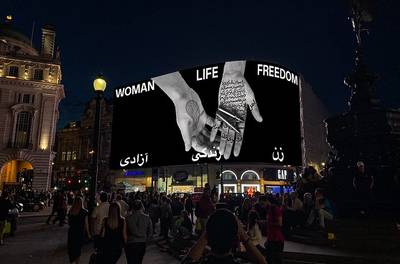

Image sourced from Otava Publishing Company
Wambui Njuguna-Räisänen (she/her) is a trauma-informed Ashtanga Yoga teacher. She is Yoga Alliance E-RYT 500, and TCYM-T certified. Based in Finland, she’s passionate about making wellness through yoga and meditation seamlessly engaged in equity and justice so that more people of the global majority can live well and thrive.
Who is a Third Culture Kid in Finland? On the cover of this handsome dark green hardcover book, the orange coverlet reads in lighter green print Suomalaiset, jotka luovat aktiivisesti uusia identiteettejä ja kulttuurisia todellisuuksia sekä joutuvat luovimaan olemassa olevien kulttuureiden kehillä ja väleissä – loosely translated to “Finns who actively create new identities and cultural realities and have to create within and between existing cultures.” Third Culture Kids Suomi Finland is an ambitious, bold book and a harbinger of a new direction for Finland.
Third Culture Kids Suomi Finland teases out the multidimensional layers of culture and identity. What does it mean to be born in Finland and know Finland as your place of residence and socialization, to be a native Finnish speaker and be spoken to in English, to have a white Finnish parent, and get asked where one is really from? What does this do to one’s sense of belonging? At what point can those who operate across various linguistic, cultural, political, and religious landscapes be granted, or claim, Finnishness? Is it enough to internally feel Finnish when one may be on the safer side of systemic and institutional structures, yet casual, daily interpersonal interactions interpret you as not from here, not fitting into the narrow confines of what a Finn looks and sounds like?
Following the renaissance of documentation of third culture folk in Norway and Sweden, the Otava Publishing company wished to localize it to Finland. They reached out to Koko Hubara, founder of Ruskeat Tytöt, who gathered a group around her to materialize the project. They invited Mona Eid to do the interviews and write the articles alongside Koko. Both Hubara and Eid were curious to witness and document the concepts of Third Space, Cultural Hybridity and Mestiza Consciousness, all of which offered seminal motivation for the book project. Caroline Suinner collaborated on the visuals and the photography, while Kiia Beilinson worked on graphic design. Otava obtained a free license, and these four professionals, and all third culture kids themselves, traveled around Finland two years ago, in late 2019, to gather these stories.
There was an application round for people to share their stories online via social media and networks. Some scouting was done to ensure that the participants’ ages and geographical locations were diverse. In addition to the capital region, the interviewers traveled to Oulu, Vaasa, Jyväskylä and Järvenpää. The book features a vibrant cross-section of Finnish society that defies the flat, flattening and flattened soundbytes typically trotted out to showcase diversity in this still staggeringly majority white-normative Nordic country. One gets the sense that the four collaborators behind the making of the book operated in as decentralized a way as possible: offering a space to those interviewed to share their stories in their own words.
For Mona Eid, Gloria Andaldua, and her concept of mestiza consciousness, borderline identities, means the mixing and matching of things that seem unmatchable somehow: “The new mestiza copes by developing a tolerance for contradictions, a tolerance for ambiguity. She learns to be an Indian in Mexican culture and Mexican from an Anglo point of view. She learns to juggle cultures. She has a plural personality; she operates in a pluralistic mode—nothing is thrust out, the good, the bad and the ugly, nothing rejected, nothing abandoned. Not only does she sustain contradictions, but she also turns the ambivalence into something else.”1 As with all dominant cultures, whiteness or compulsory cis-heteronormativity thrives on regularity and assurance—anything too ambiguous affronts their sense of control. Third Culture Kids then, by this definition, challenge and ruffle the status quo. As a third culture kid of Kenyan, English and Scandinavian descent, who came into racial-identity reckoning in the US and is now raising Finnish/Kenyan/English children, I am both a witness and an active participant in Finland’s latest iteration of seismic cultural shifts.
The book compiles interviews, stories, and photographs – each feature includes a full-length photo flanked on the opposite page with the interviewee’s first name and an introductory paragraph, which answers a version of the question, “Who are you?” Every entry takes up an average of six pages, with text interspersed with photographs and graphic elements. In contrast to Nordic minimalism, the book’s color palette is bright, bold, and unapologetic, with a preference for the three secondary colors and their adjacent hues. The text can be difficult to read on some pages depending on the background colour. The book’s weight (and beauty) make it more of a coffee table read than something to read while reclining in bed before turning off the lights.
On a good day, Finland is currently in a chrysalis stage of metamorphosis – it is being born into itself. On a difficult day, it is undergoing an identity crisis, resisting a more profound shift into the question of who a Finn is, what it means to be a Finn, and who gets to be Finnish. On other days, the country’s demographics are shifting, influencing different ways of seeing, experiencing and moving through life.
The book touches on many themes such as belonging, home, safety, ‘Finnish-ness’, and intergenerational conflict, particularly gender expression and sexual orientation. Still, it overlooks the presence of those third culture kids who find themselves in Finland as adults and immigrants – those who contribute, navigate, and participate in Finland yet don’t see themselves represented in the stories of those who were either born in Finland and have one white Finnish parent or who were adopted at a young age. A nuanced understanding of proximity to power and privilege, even while simultaneously experiencing marginalization and erasure, goes a long way for all. Much can be taken for granted when structural entry into the country is provided, even if social norms lag.
On a good day, Finland is currently in a chrysalis stage of metamorphosis – it is being born into itself. On a difficult day, it is undergoing an identity crisis, resisting a more profound shift into the question of who a Finn is, what it means to be a Finn, and who gets to be Finnish. On other days, the country’s demographics are shifting, influencing different ways of seeing, experiencing and moving through life. Might we afford ease, space, dignity and beauty for those who can’t put away their identities when they get too heavy to hold?
What I understand through the book is that in addition to existing as liminal beings, third culture kids also occupy liminal space, “a liminal space is the time between the “what was” and the “next.” It is a place of transition, a season of waiting and not knowing. Liminal space is where all transformation takes place if we learn to wait and let it form us.”2 Minea Haboon Jama, a Somali-Finnish third culture kid, captures this liminal space in her admission, “I am no longer ashamed of myself, but sometimes I am tired.” Learning about trans existence versus living it is that in the former, one can choose to put the book down when one feels like it. But one can’t put away one’s identity no matter how exhausting the burden to society it is to bear – poignantly illustrated in Dakota Demiri’s story, a Turkish-Finnish trans person, “Nowadays I don’t fight anymore but ask beautifully what evil I have done to you with my mere existence.” The book shows that the old order is fading away, and a new one is not yet on the horizon. Layli Maparyan states, “Humanity is in the process of evolving towards global society and planetary identity based on global, even cosmic citizenship,” What is called for in times like these is a deep dive into unknowing, a trusting, and a liminal float in spiritual depths that can sustain our collective wellbeing. Linda-Maria Roine expresses the need for ease in this deep dive into the unknown, unknowable, and unknowable process of human evolution, “Let me please just be and define myself at any time in any way.”
Reading the book, I was reminded of the first line of Hanif Kureishi’s novel The Buddha of Suburbia “My name is Karim Amir, and I am an Englishman, born and bred, almost.” What lies in the almost? What worlds are incubated in the seedling of almost a restless yearning?
In the almost, an opportunity arises to offer insight to questions: What does cultural hybridity mean? What does it mean to be in the middle? On the margins and borderlands of many cultures and religions and languages? Indian-English scholar and critical theorist Homi K. Bhabha introduced us to the Third Space as “a transition space, where political, aesthetic or everyday practices subvert post-colonial power relations and norms. A Third Space is not a physical place; it’s much more a space where hybrid identifications are possible and where cultural transformations can happen. Third Spaces enable cultural hybridity, that is to say, identities and practices, which perform difference without an assumed or imposed hierarchy.”3 And what in the case of racial hierarchy? How does one negotiate one’s third place along the vertical racial hierarchy when one is the offspring of one white and one black parent? Depending on the context, one might reap societal and material benefits of proximity to whiteness, effectively distancing oneself from their African side or code-switch. Is this complicity and habituation to the white gaze a third space? Does adhering to the politics of respectability guarantee belonging and safety? Mainmouna Jagne-Soreau points to the fragility of such an alliance, “My white canon is my comfort zone, and I want to focus on showing how whiteness is a construction too.”
The term “hybrid” was used in biology and botany to describe, with negative connotations, the crossing of people of different races (i.e. “half-breed”, “mongrel”, “bastard”); however, in the twentieth century, hybridity was recontextualised to refer to a cultural phenomenon. Bhabha takes it a step further and reinvents the term to state that when the domination of a single story or narrow lens through which colonial authority has been assigned is questioned, meaning begins to crumble. Bhaba sees hybridization as an ongoing process where forms constantly revolve, and “it is the in-between space that carries the burden of the meaning of culture.”4
Jagne-Soreau, who self-identifies as French, points to the promise, potential and pitfalls of occupying the Third Space and embodied cultural hybridity, “Finland is my home in the sense that my home and family are here, and I have been better here than anywhere else. But on the level of identity, I don’t feel Finnish. That may be due, in part, to the fact that you don’t know how to talk about the theme of mixed races here, but that doesn’t explain the whole thing. Everyone who talks about non-whiteness in Finland, or in Europe in general, seems to be mixed-race, but they only talk about Black and white is forgotten. It is an important part of us, an important debate, and I look forward to it. We don’t seem to be ready yet.”
Third Culture Kids Suomi Finland offers its readers a Third Space: a dynamic tension between the urgency and longing for specific conversations and the patience required for the tipping point to happen before the conversations are ready to be had. Shouldn’t we have them un-ready? So we can normalize certain topics and get more skilled in talking about them? The book is an invitation to examine assumptions – “Brown Finnishness is its own thing. It’s an encounter in the margins.” – Fiona ‘Elōne; it is a celebration of fluid, shape-shifting identities – “It would be terribly distressing if identity were the same all the time. It’s changing, and it’s wonderful that I have the kind of background that I have.” – Aino Afraimsson; it declares that the one who traverses worlds is not broken, incomplete, fragmented, but whole – “Sometimes I feel as though I’ve always lived as a chameleon.” – Gouled Mohamed Abd; it interrogates why dominant cultures must box and categorize identities into narrower definitions – “I’m starting to criticize the fact that cultural or national identity should be the supreme identity of all identities.” – Alice Jäske. Above all, it urges the reader to “Tell your story, no matter the reception”.
Telling one’s story entails risk, especially when it goes against the grain and exposes the status quo’s biases and blindspots. Make no mistake about it. Speaking your truth comes with a price tag. Whether it’s the quiet desperation lived in exchange for the ‘safety’ of anonymity and invisibility or ostracization that comes with the messenger being punished rather than the message being heard.
Telling one’s story entails risk, especially when it goes against the grain and exposes the status quo’s biases and blindspots. Make no mistake about it. Speaking your truth comes with a price tag. Whether it’s the quiet desperation lived in exchange for the ‘safety’ of anonymity and invisibility or ostracization that comes with the messenger being punished rather than the message being heard. Third Culture Kids Suomi Finland implores us to feel what we feel and do it anyway in spite of the risk.
Tokenism – an illusion of inclusion, a shallow band-aid approach to address institutionalized, systemic inequities – is often used to blindside third culture kids. They’re burdened with diplomacy – to be the cultural bridge and ‘uniter’ of two or more disparate identities. What are some of the invisible wounds that third culture kids carry? Aged 67, Finnish-Trinidadian Michael Hutchinson-Reis offers an uncomplicated perspective on third culture kid identity, struggle and triumph, “Some black and many white people don’t realize that I’m not what they expect me to be. I’m not a stereotypical character. Some are positively surprised, but some don’t like being surprised.” Perhaps the spirit of hope was prioritized in the book’s undertaking since most of those interviewed are under 45. I trust stories like that of Kaile Pallas, an eight-year-old sports-loving afro princess who displays pride in her being can be nurtured and normalized.
All four collaborators have autographed my copy and have offered notes of encouragement to my two children – third culture kids themselves. It’s my wish for my children to be able to see parts of themselves in this book. While the book explicitly showcases people who come from two or more worlds, be it based on nationality, ethnicity, race, culture, religion, language etc., it also encapsulates where Finland is, has been and is going. It is validating and empowering to see photos and read interviews featuring people with similar stories as one’s own. It’s equally enlightening for those who may occupy more “centralized” identities within the understanding of Finnish norms, to own a copy of the book and witness the emergence of a Finnishness not yet enshrined and set in stone. Third Culture Kids Suomi Finland represents in parts the legacy, investment, and historical documentation that serves as a lighthouse for anyone who has ever felt isolated, invisible and on the margins.







